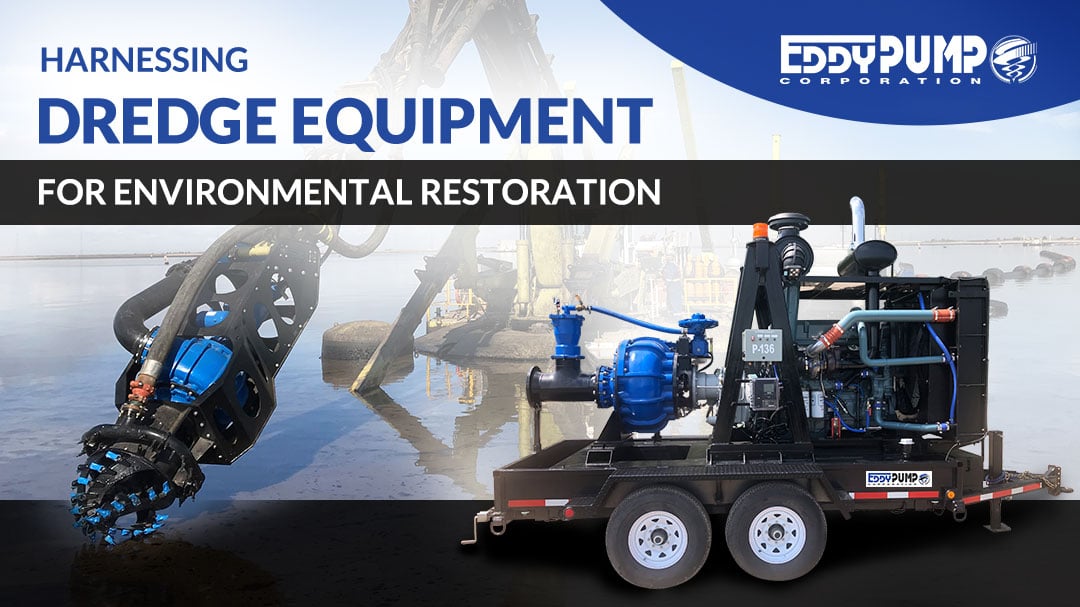
Few tools are as indispensable as dredge equipment in environmental conservation and remediation. This specialized machinery is designed to remove sediment, pollutants, and debris from water bodies, playing a vital role in restoring ecosystems, mitigating pollution, and safeguarding natural resources. Let us explore the significance of dredge equipment and its application in environmental remediation projects.
Understanding Environmental Remediation:
Environmental remediation encompasses a broad range of activities to reverse or mitigate environmental damage caused by human activities. From contaminated sites to degraded habitats, remediation aims to restore ecological balance, protect public health, and preserve natural resources. Dredge equipment is crucial in achieving these objectives by addressing various environmental challenges associated with water bodies.
The Role of Dredge Equipment:
Dredge equipment serves multiple purposes in environmental remediation projects, offering practical solutions to diverse environmental issues:
- Sediment Management:Sediment accumulation is a common problem in water bodies, resulting from erosion, runoff, and natural processes. Excessive sedimentation can impair water quality, degrade aquatic habitats, and obstruct navigation channels. Dredge equipment removes accumulated sediment, restoring water depth and clarity. By maintaining optimal sediment levels, dredging helps sustain healthy aquatic ecosystems and supports recreational and commercial activities dependent on clear waterways.
- Pollutant Remediation:Many water bodies are contaminated with pollutants such as heavy metals, industrial chemicals, and nutrients from agricultural runoff. These pollutants threaten aquatic life and human health, necessitating remedial actions. Dredge equipment facilitates the removal of contaminated sediment, preventing the spread of contaminants and reducing environmental risks. Targeted dredging operations can safely contain and dispose of contaminants, minimizing their impact on surrounding ecosystems.
- Habitat Restoration: Dredge equipment is vital in restoring degraded habitats and enhancing biodiversity in aquatic ecosystems . Wetlands, marshes, and estuaries are among the habitats that benefit from dredging activities aimed at removing invasive species, restoring natural hydrology, and improving habitat conditions for native flora and fauna. By recreating favorable habitat conditions, dredging supports the recovery of endangered species, promotes ecosystem resilience, and enhances overall ecosystem health.
- Flood Control and Prevention:In flood-prone areas, sedimentation can exacerbate flooding by reducing water storage capacity and obstructing natural drainage pathways. Dredge equipment is utilized to mitigate flood risks by dredging channels, rivers, and reservoirs to increase water conveyance capacity and reduce the likelihood of inundation. Through strategic dredging interventions, communities can enhance their resilience to flooding events, protect infrastructure and property, and minimize economic losses associated with flood damage.
Types of Dredge Equipment:
Dredge equipment encompasses a diverse array of machinery and technologies tailored to specific project requirements and environmental conditions:
- Mechanical Dredgers: These dredgers employ buckets, clamshells, or cutter heads to excavate sediment and debris from the seabed or riverbed. Mechanical dredgers are effective for removing dense materials and hard sediments, making them suitable for projects requiring precision and control over dredging operations.
- Hydraulic Dredgers: Hydraulic dredgers utilize powerful pumps and pipelines to dislodge sediment and slurries from the seabed, which are then transported to designated disposal sites. This method is particularly efficient for dredging soft sediments and contaminated materials, offering high productivity and flexibility in varying environmental conditions.
- Suction Dredgers: Also known as suction dredges or vacuum dredgers, these vessels use suction pumps to extract sediment and debris from the water bottom. Suction dredgers are highly versatile and capable of operating in shallow waters and confined spaces where other dredging methods may be impractical. They are often employed for maintenance dredging, environmental cleanup, and construction projects requiring precise sediment removal.
Conclusion:
Dredge equipment is critical in environmental remediation projects by addressing sedimentation, pollution, habitat degradation, and flood risks in water bodies worldwide. As the demand for sustainable environmental solutions grows, the effective utilization of dredging technology will remain essential in preserving and protecting our planet’s precious ecosystems. By harnessing the power of dredge equipment, we can work towards a cleaner, healthier environment for current and future generations.
